Archive | Industry and trade RSS feed for this section
Industry and trade
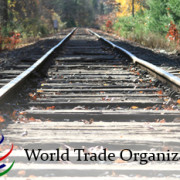 Industry and trade
Industry and trade
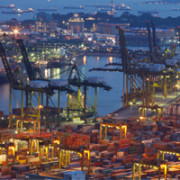 Industry and trade
Industry and trade
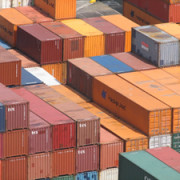 Industry and trade
Industry and trade
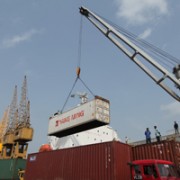 Industry and trade
Industry and trade
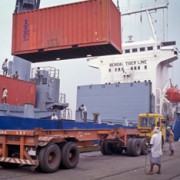 Industry and trade
Industry and trade
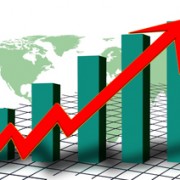 Industry and trade
Industry and trade
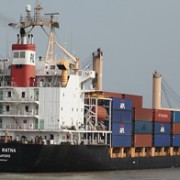 Industry and trade
Industry and trade
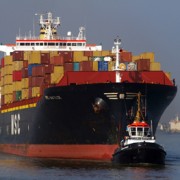 Industry and trade
Industry and trade
 Industry and trade
Industry and trade
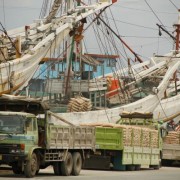
Back on track? The importance of the Bali Package for the WTO and global trade

After several days of grueling negotiations the Ninth WTO Ministerial Conference in Bali, Indonesia, in December 2013, adopted the Bali Package aimed at mainly streamlining global trade. However, this is only the first step toward a Doha deal and much work remains to re-formulate a post-Bali agenda, as well as reform of the WTO to restore its relevance as a key pillar of multilateral trade relations.
Where should the Trans-Pacific Partnership negotiations go next?

Officials have been scrambling to conclude the negotiations of the Trans-Pacific Partnership (TPP) among the current 12 participating members: Australia, Brunei Darussalam, Canada, Chile, Japan, Malaysia, Mexico, New Zealand, Peru, Singapore, the US, and Viet Nam. As the talks reach the finish line, officials need to focus on several key broader issues that will set up the institutional structure for the TPP going forward.
A vision of global free trade? The new regionalism and the ‘building blocs’ debate

While the WTO Ministerial meeting in Bali in December may deliver on individual initiatives related to such themes as agriculture, trade facilitation and development, a major breakthrough on the “single undertaking” is far from sight. At the same time, mega-regional agreements are fast emerging as a key feature of the global architecture. This “new regionalism” could pose risks, but successful mega-accords will create a strong incentive for a global accord; hence, the “new regionalism” will arguably be a powerful “building bloc” that will ultimately support multilateralism.
Economic integration and trade liberalization in South Asia

Thanks to its sustained economic growth over the last several decades, Asia has become the world’s most dynamic region. Maintaining this impressive growth rate, however, requires market integration to ensure the free flow of goods, services, and capital across borders (ADB 2013). Indeed, interplay of market forces and increased participation in trade have been decisive in the growth of emerging Asian economies. Until now, most of Asia’s final goods have been exported to Europe and the United States. Access to large markets allowed Asian countries to exploit their economies of scale on the one hand, and stimulate growth in their productive sectors on the other. With the rise of Asia, it is time for these countries to cooperate and become an integrated market of their own.
Why Indian business should embrace the RCEP

Mega regional trade deals are in vogue in a fragile world economy as a means to spur trade and growth. Asia’s mega regional trade deal—the Regional Comprehensive Economic Partnership (RCEP), which includes India—is quietly being negotiated. But it deserves more press because the RCEP would create the world’s largest trading bloc and have major implications for Asian countries and the world economy. India is an important player in the RCEP negotiations but some Indian businesses are concerned about the prospect of further Indian trade with, particularly imports from, the People’s Republic of China (PRC). What would the RCEP cover and will Indian business benefit? What are the barriers to success and what should be done to overcome the hurdles?
RCEP and TPP: Next stage in Asian regionalism

According to a report by the Asian Development Bank (2008), “Asia’s economies are increasingly vital to each other and to the world. Asia’s output today roughly equals that of Europe or North America, and may well be 50% larger than theirs by 2020, in terms of purchasing power parity.” Moreover, with both the US and Europe continuing to post low GDP growth of 1% to 2.5% annually, the center of the recovery has shifted to Asia. These factors became apparent during the November 2012 ASEAN summit, when Asia saw two different approaches to trade liberalization. One is the ASEAN-led Regional Comprehensive Economic Partnership (RCEP) and the other is the US-led Trans-Pacific Partnership (TPP).
The role of Trans-Pacific Partnership in US trade policy

The Trans-Pacific Partnership (TPP) is akin to other free trade agreements (FTAs) that the United States (US) has negotiated over the past two decades that are aimed at opening markets and providing new opportunities for US goods, services, and firms. The TPP is the first FTA to be negotiated by the Obama Administration. The three FTAs (with Colombia, the Republic of Korea, and Panama) that the Obama Administration implemented in 2012 were negotiated and signed by the prior administration. The TPP will be the most significant FTA that the US has negotiated since the North American Free Trade Agreement (NAFTA) with Canada and Mexico, which entered into force in 1994.
Policy challenges posed by Asian FTAs

Asian economies face important policy challenges regarding the use of free trade agreements (FTAs): primarily their scope and their impact on regionalization trends. These topics are the front line of contemporary negotiations and of interest to policymakers. This column examines these challenges based on new data on the business impacts of FTAs and contents of existing FTAs. It also discusses political economy considerations of FTA consolidation in Asia and its potential connection with North America and Europe. Asia’s rise as the “global factory” over the past several decades was underpinned by outward-oriented development strategies and multilateralism. FTAs, as trade-policy instruments in the region, were largely absent until the 1990s.
The PRC is not yet the world’s No. 1 trading nation

Since the People’s Republic of China (PRC) surpassed Japan as the world’s second largest economy in 2010, guessing when the PRC would eclipse the United States (US) as the world’s largest economy has been an exciting game among PRC watchers. On 10 February came the surprising news that the PRC had surpassed the US to become the world’s No. 1 trading nation, after both countries officially announced their 2012 trade figures. According to the US Department of Commerce, total US trade in 2012 amounted to $3.82 trillion, about $50 billion short of the PRC’s exports and imports of $3.87 trillion, estimated by China Customs.
Openness and infrastructure are key to growth in Indonesia

Slowing growth and rising unemployment sometimes induce economies to become more inward-oriented with restrictive policies. Indonesia shows early signs of such tendencies and its future growth may be at risk. The experience of high performing East Asian economies, however, suggests that outward-oriented policies and infrastructure investment support sustainable growth. Indonesia’s growth slowed to 6.2% in 2012 from 6.5% in 2011. Its growth in the previous decade was below 6%. A slight dip notwithstanding, a turnaround seems to be continuing in this resource-rich economy once seen by the West as a basket case of crony capitalism during the 1997–1998 Asian financial crisis.


Search
Subscribe / Connect to Asia Pathways
Subjects
- Agriculture and natural resources
- Blog
- Capacity development
- Climate change
- Economics
- Education
- Energy
- Environment
- Finance sector development
- Gender
- Governance and public sector management
- Health
- Industry and trade
- Information and Communications Technology
- Infrastructure
- Miscellaneous
- Population
- Poverty
- Private sector development
- Regional cooperation and integration
- Sanitation
- Social development and protection
- Transport
- Uncategorized
- Urban development
- Video Blog
- Water
Recent Posts
- Navigating Linear Transport Infrastructure Through Conservation Landscapes
- How Are Technology Trends Shaping the Future of Insurance?
- Securing Asia’s Future Through Soil Health: Why It Matters and What Must Be Done
- Silent Struggles: Advancing Women’s Mobility with Public Transportation in Asia
- Mind Your Neighbors: Measuring Shrimp Farm Spillovers




Recent Comments